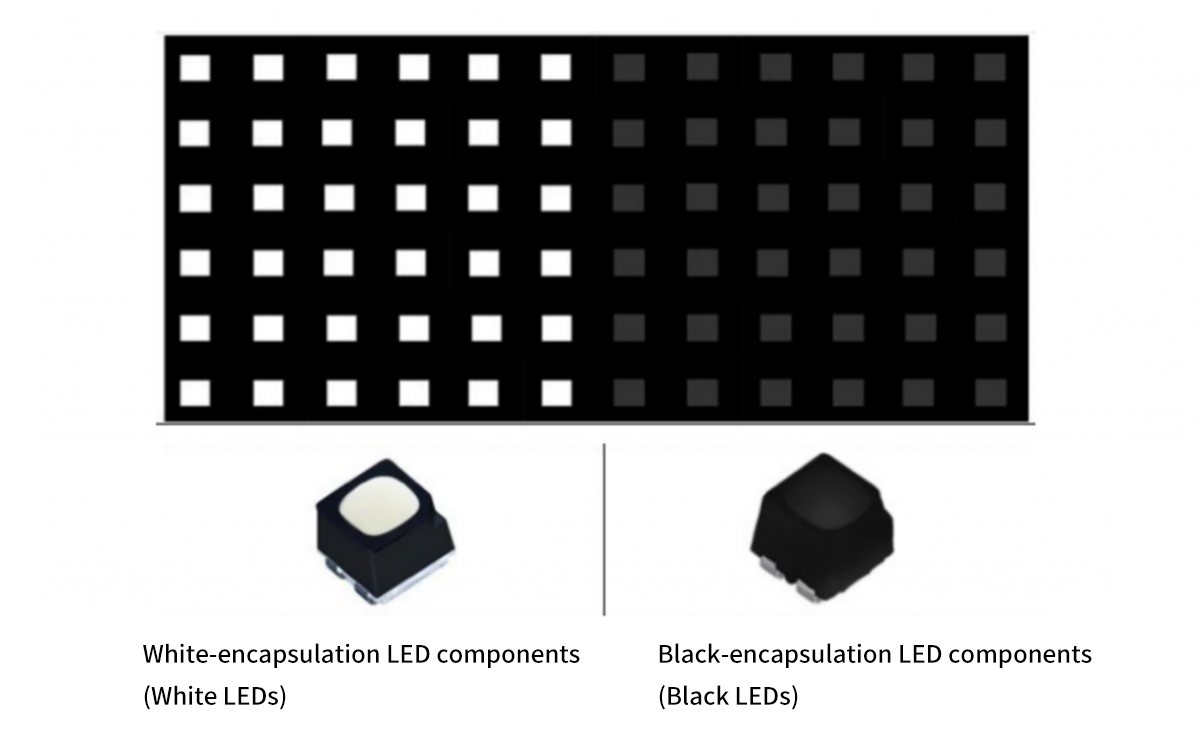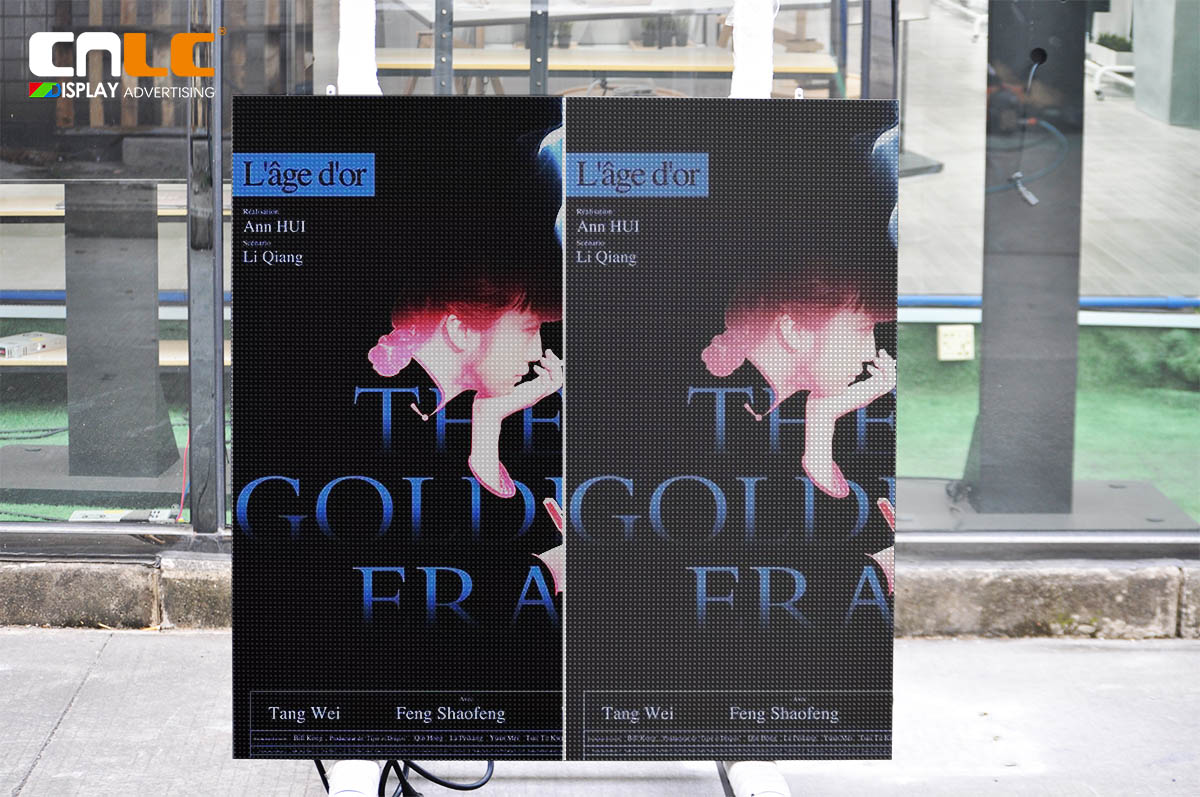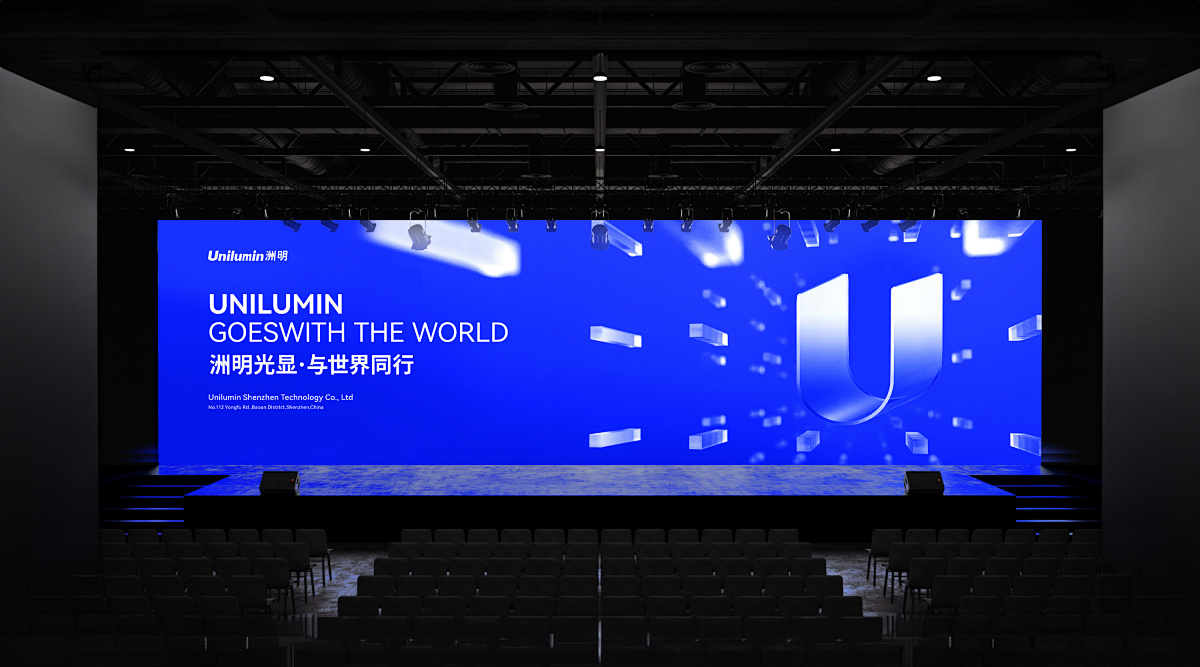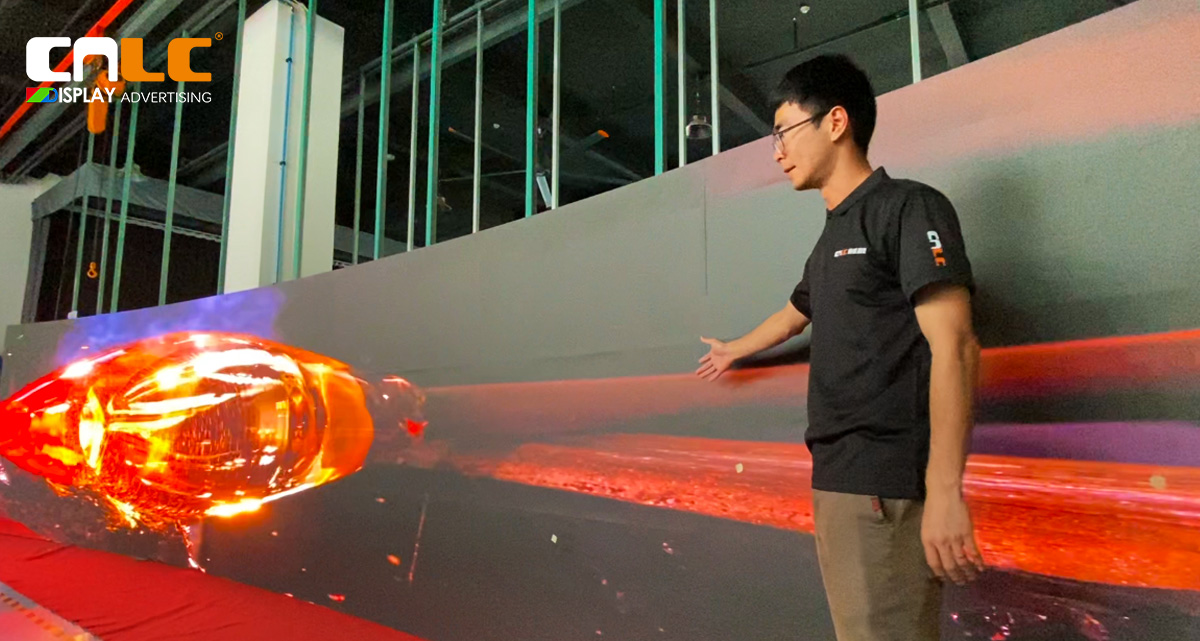Since the advent of LED displays, white-encapsulation LED components (white LEDs) have dominated the market. However, with the advancement of technology, black-encapsulation LED components (black LEDs) have gradually emerged and begun to make a significant impact. This article will delve into the advantages and potential applications of black LED displays and analyze the technological innovations they bring compared to traditional white LED displays.
What is a Black LED Digital Signage Display?
A black LED display uses LED components encapsulated with black materials, which absorb ambient light and reduce reflections, significantly enhancing display contrast. This innovative encapsulation technology gives black LED Advertising displays a superior display effect over traditional white or transparent encapsulated LED screens.

Advantages of Black LED Displays:
High Contrast: The black encapsulation absorbs ambient light, reducing reflections and increasing the display's contrast. According to the "General Specification for LED Displays" SJ/T 11141-2012, contrast refers to the ratio of maximum brightness to background brightness measured under specific ambient light conditions. High contrast means more vibrant and detailed display effects.

Non-reflective: The PPA frame in black LEDs is black and does not reflect light. Instead, light hitting the black surface is converted into heat, reducing the interference from ambient light and enhancing the purity and realism of the display.

Suitable for Indoor and Outdoor Use: Black LED Advertising displays are not only suitable for outdoor use but can also achieve high-quality indoor display by reducing brightness. Their gray level compensation technology maintains stable gray levels and color accuracy when brightness is lowered.
Why Are Black LED Digital Billboard Less Common?
Despite the numerous advantages of black LED Digital Billboard displays, their market adoption faces several challenges:
High Cost: Black LEDs typically cost 2-3 times more than white LEDs, leading to higher market prices, which many customers find prohibitive.
Traditional Perceptions: Customers often believe that outdoor LED displays need to be very bright. The current mainstream outdoor LED products are mostly white LEDs, and there is a common perception that black LEDs must match the high brightness of white LEDs to be suitable for outdoor use.
Low Market Awareness: Many customers have used white LED products for a long time and are unfamiliar with black LED technology. They are unsure whether black LEDs can meet the brightness requirements for outdoor use and are unaware of the potential display benefits for outdoor applications.
Applications of Black LED Displays

Black LED Digital Billboard displays, with their superior performance, have shown immense potential across various fields. In applications such as indoor and outdoor high-definition displays, outdoor billboards, sports stadium screens, and stage backgrounds, black LED displays are gradually replacing traditional LED screens due to their excellent display quality and energy-saving features, becoming the new favorite in the high-end display market.

Conclusion
Black LED displays, with their high contrast, superior color accuracy, and broad application prospects, are gradually replacing traditional white LED displays. However, high costs and low market awareness remain significant barriers to their adoption. As technology continues to advance and the market gradually embraces this innovation, black LED displays are poised to play a more important role in the future development of display technology, offering superior solutions for a variety of applications.